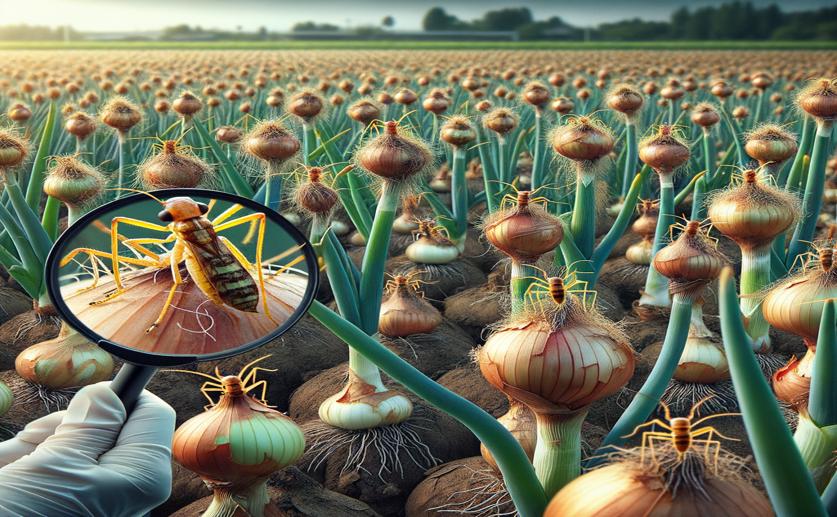
New Sampling Plan to Classify Thrips Populations in Onion Fields
Jim Crocker
20th July, 2024

Image Source: Natural Science News, 2024
Key Findings
- The study was conducted in 24 commercial onion fields in New York during 2021 and 2022
- Researchers developed a new sampling plan that uses fewer samples to classify thrips populations as above or below management thresholds
- The new plan required 78% fewer samples on average compared to traditional methods, saving time and labor for growers
AgriculturePlant ScienceAnimal Science
References
Main Study
1) Development of a sequential sampling plan for classifying Thrips tabaci (Thysanoptera: Thripidae) populations in onion fields.
Published 19th July, 2024
https://doi.org/10.1093/jee/toae161
Related Studies
2) Sampling, a New iOS Application for Assessment of Damage by Diseases and Insect Pests Using Sequential Sampling Plans.
3) Enumerative and binomial sequential sampling plans for soybean aphid (Homoptera: Aphididae) in soybean.
Journal: Journal of economic entomology, Issue: Vol 97, Issue 6, Dec 2004
4) Temporal dynamics of iris yellow spot virus and its vector, Thrips tabaci (Thysanoptera: Thripidae), in seeded and transplanted onion fields.



 4th June, 2024 | Greg Howard
4th June, 2024 | Greg Howard